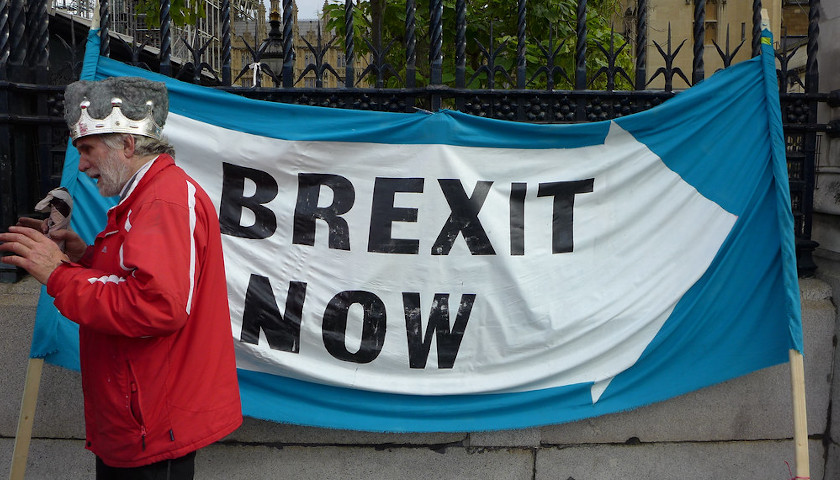by Paul Bradford
The Conservative Party won big in Great Britain’s parliamentary elections last week, prompting many analysts to wonder how it happened. The popular observation is that the Conservatives won due to Jeremy Corbyn, the controversial leader of the Labour Party. Corbyn’s associations with the IRA, Palestinian terrorists, Communist guerrilas, and anti-Semites didnt endear him to many voters. But too many conservatives think Corbyn’s controversial record, particularly the anti-Semitic accusations, is what decided the election.
It’s reasonable to think that Corbyn’s far-left nutjob image hurt Labour, particularly with working-class voters who once formed the base of the party. But this focus on personality ignores the extreme agenda Labour itself has been promoting. Labour vowed to enact open borders and to deliver a second referendum on Brexit, among other radical ideas. These proposals most likely pushed working-class voters to the Conservatives, who promised to reduce immigration and deliver Brexit.
Prime Minister Boris Johnson promoted a nationalist campaign platform and that platform won a historic victory for the Conservatives. Nationalism was the key to victory, plain and simple.
Corbyn’s Labour Party was riven with division over immigration and the party leader tried to strike a middle ground between the unions who wanted immigration controlled and activists who wanted open borders. The party, however, pretty clearly leaned to the open borders side.
The party approved an extreme immigration plan that called for “free movement” of citizens from non-European Union countries and would allow noncitizens to vote in British elections. “Free movement, equality and rights for migrants, are socialist values and benefit us all,” the measure declared. The plan also demanded the closure of detention facilities, opposed “any immigration system based on incomes, migrants’ utility to business, and number caps/targets,” and requested the party “actively challenge anti-immigrant narratives.”
Corbyn claimed the party’s plan would not allow for complete “free movement” (a euphemism for open borders), preferring to say it would only allow “a lot of movement.” His supposed compromise plan would allow more migrants to bring family members to the UK.
Labour’s liberal immigration policies alienated actual laborers. “I don’t think [what conference voted for] is a sensible approach and I will be expressing that view,” labor union leader Len McCluskey told The Guardian.
Conservatives claimed immigration would skyrocket to 840,000 migrants per year under the Labour plan. That would be like America taking in nearly 4 million immigrants every year. This astronomical number would radically transform the UK and hurt native workers.
The Conservatives’ plan was more sensible. It called for a serious reduction in immigration and reforming the UK’s current system to favor skills and professions Britain actually needs. “Immigration will finally be subject to democratic control, allowing us to get overall numbers down,” Home Secretary Priti Patel said last month.
In contrast to Labour’s plan to allow non-citizens to vote, Johnson promised to signal to EU migrants that the UK was not their own country. “You’ve seen quite a large number of people coming in from the whole of the EU—580 million population—able to treat the UK as though it’s basically part of their own country, and the problem with that is there has been no control at all and I don’t think that is democratically accountable,” he said a few days before the election.
Johnson plans to create a new department to tackle immigration and this idea is one of his party’s first legislative priorities.
On Brexit, Labour found itself against the people’s will. Labour promised to hold a second referendum on the 2016 vote in order to overturn the people’s decision. Conservatives vowed to deliver Brexit under the simple slogan: “Get Brexit Done.”
Additionally, Conservatives moved their economic policies away from the libertarian economics favored by American conservatives to a more centrist approach that would increase spending on infrastructure and citizen benefits.
The Tories learned important lessons from 2016’s Brexit vote. The British people voted for it not because of EU regulations, but because they wanted to reduce immigration. They were not expressing a wish for more libertarian policies—they wanted a nationalist government to restore sovereignty and protect the national identity.
Johnson, a crafty pragmatist, steered his party to these popular winds and crushed his rivals to the Right and his enemies to the Left.
The Conservative Party’s major victory is a clear message to all right-wing parties in the West: nationalism is the perfect formula to win.
In America, our Democratic Party is following the path of Corbyn’s Labour Party in its support of open borders and opposition to any immigration enforcement. Trump’s 2020 campaign message is not as clear as it was in 2016, but that same platform is still as popular as it was when it won Trump the presidency.
Put America First and curb immigration. It won in the UK, and it can win again in America.
– – –
Paul Bradford is a Capitol Hill refugee now earning an honest living.
Photo “Brexit Supporter” by ChiralJon. CC BY 2.0.




